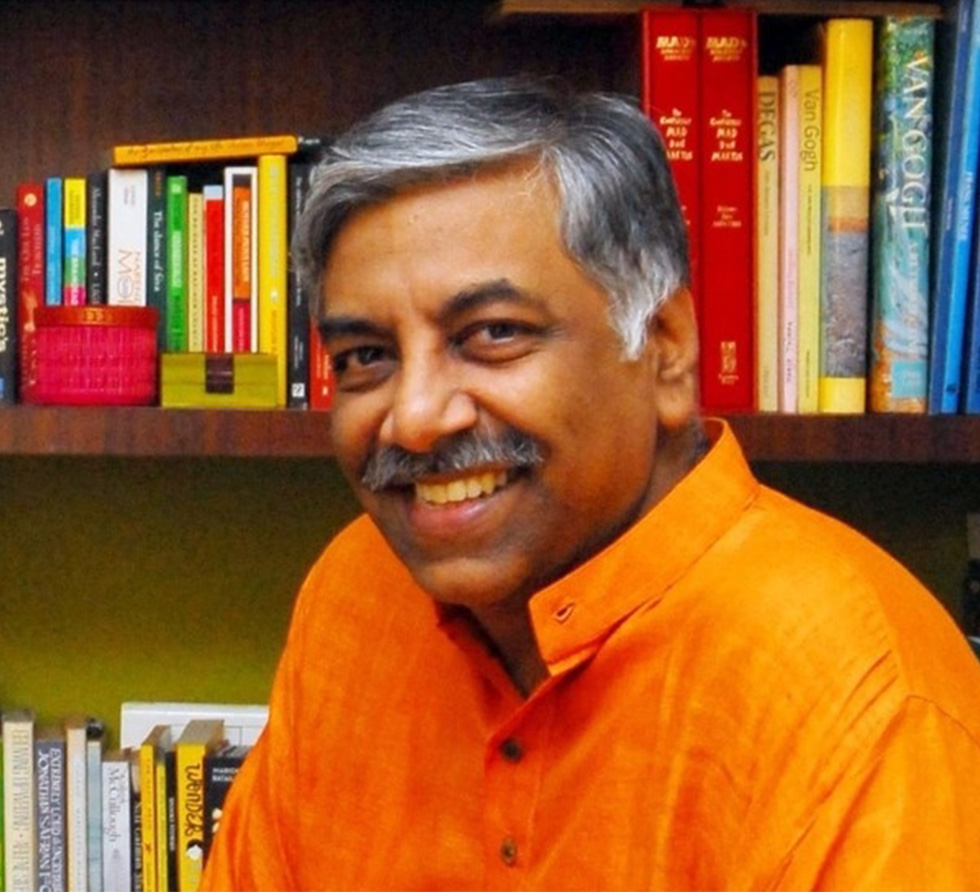
A new age, a new decade, a new normal. 2020 literally turned the tables around for the world. The skyrocketing rise of technology and its disrupting influence and impact, a life threatening pandemic, the loss of time imposed by an unprecedented lockdown, the unexpected rise and hard-hitting fall of EdTech, the threats posed by Open AI, and more, it’s been a whirlwind ride. Yet through it all, time continued to tick and life moved on to what we today address as the ‘new normal.’ Amongst industries, one that was most impacted by this new normal was the field of education. Like one says, learning never stops, and it did not. Many wonder if schooling today is starkly different from 2019? Why did India’s flourishing EdTech startup funding plummet from $5.82 billion in 2021 to $2 billion in 2022 till August 15 (according to data tracking platform Fintrackr)? And, as said by The New York Times, should one not ban Chat GPT but instead work with it? Veteran Educator, Musician and Entrepreneur, C.P Viswanath, Co-Founder, Director and CEO of Karadi Path Education Company throws light on these pertinent questions and much more.

What are the essentials that build the foundation for education?
In the rapidly evolving world today one can look at it in a couple of ways, though my candid confession will be that if we look at schooling and education no one can predict what it will look like 20 years from now – that’s how rapidly things are changing. Firstly, the one basic capacity that one needs to build through education is the innate ability to ‘learn’. This instils the confidence that ‘I can learn on my own’ and schools prepare one to become efficient learners irrespective of the domain or subject. ‘Learning to learn’ is the core competence every student needs to have to be successful in a future that is unknown.
Thereafter one needs to nurture elements such as empathy, critical thinking, communication, collaboration, creative thinking, conceptual understanding and others as a subset to hone one’s fundamental abilities and enable one to learn better. For me, these two define the objectives of learning and help build a solid foundation for education.
The pandemic brought about a dramatic shift in education, which some willingly and others reluctantly, had to embrace. How would you define this evolution?
This evolution has its positives and negatives. On the positive note the sensitivity to acknowledge and embrace technology has gone up multifold. Technology has always been a part of education, even prior to the pandemic, but Covid brought to light its importance as a critical tool and made even the reluctant academicians embrace it. It made teachers more willing and eager to learn about teaching methods related to technology.
The pandemic, while highlighting the wonders technology can do in education, also exposed its limitations. It made one realise the power of a classroom which cannot be substituted by an online zoom class. While teachers improvised classroom practices to provide a better online experience it made it obvious that a school, classroom and interactive learning are basic essentials of learning. Be it corporates or EdTech, those who solely focused on technology over pedagogy could not ride the boom for too long. In the matter of about 2-3 years certain segments in the online learning landscape bit the dust.
I wouldn’t say the Pandemic has substantially redefined learning in any significant way though it has definitely opened our eyes to the urgency of adapting to technology and implementing it in classrooms without compromising on the pedagogy.
Can technology become a substitute for Pedagogy? Will Chat GPT ever make teaching a redundant profession?
My short answer to this is ‘NO’, Chat GPT cannot replace a teacher. Though it is important to note, if you do not understand and use Chat GPT in the process of your learning and teaching, as a teacher one will be left behind. We should welcome Chat GPT as a tool that helps one learn and perform better. Presently we are witnessing two sides of the coin. Let’s first talk about the people who are fear mongering about the threat Chat GPT poses; yes, there will be short term issues as we need to learn, take for example ‘intellectual property’ – now a point to note is Chat GPT gets its information from us, it isn’t creating its own information. While it extrapolates information, one can build a regulatory framework for the fair utilisation of this tool.
Yes, there will be hiccups and confusion though we can definitely find a structured way to use Chat GPT as it is an amazing tool and I would like to state that while Chat GPT has been the recent talk of the town GPT tools have been around for a while. The new elements of AI have shown their capability to help create music, art and a wide range in addition to the linguistic programming being talked about, and I am sure we will soon see different avatars of Chat GPT in different domains with GPT specialising in maths, art, language and more. You name it and we will soon have GPT for it (hearty laugh).
And I will not be surprised if in the next 2-3 years you see something beyond GPT as that is the pace at which technology is ‘learning’ from itself and innovation is advancing in this field.
In this mesmerising world of technology and its disruptive characteristics what makes the brick and mortar school a force to reckon with?
Hmm, ok, let’s take the example of a 10 or 12-year-old. Does he or she need that physical presence in the classroom and needs to be seated in a committed space there? The answer to both these questions is a resounding YES! A brick and mortar classroom dramatically enhances one’s mental focus, attitude and commitment towards learning. A physical classroom harbours the intangible ‘energy of learners’ which is unfortunately fragmented in an e-classroom, being physically present with 20 fellow classmates cannot be substituted with sitting at home and e-connecting with them on screen, there is a disconnect. That being said, one cannot take away the boon of one-on-one online learning.
In Indian culture a ‘guru’ or teacher is known to show the student or shishya a pathway and not simply pass on knowledge. The energy, warmth, vibe exchanged between the two is unmeasurable. You can witness its importance by seeing how children rush to classrooms once schools reopen.
To be honest in spite of all the advances in tech and the hard work put in by our teachers we were unable to replicate more than 20% - 25% of efficiency of a classroom. It may sound concerning but e-learning has caused learning deficits and degradation. Children who did not have a solid family support system during the pandemic have shown regression in their learning abilities. A class 2 student, post 2 years of the pandemic, becomes a Class 4 or 5 student though he or she has regressed even below Class 2 in many skills.
The return to the new normal has established that though online learning is filled with possibilities, simply put, it will never replace a school or a teacher in a classroom.
The years of the pandemic saw teachers take on a new challenge every day. Chin-up, they swiftly adapted and made sure learning never stopped. What does the new-age teacher look like?
As long as a teacher is a keen learner and is friendly to whatever new tools are introduced he or she will flourish in any situation. Though if a teacher is reluctant to change and remains stuck to old practices then there is fear of becoming redundant. We have witnessed teachers being reluctant to befriend Chat GPT, fearing it will take over their job. Little can be done there as with the pace of change, it’s one’s attitude that will eventually define progress and success.
What do you foresee will be the trajectory for education in India for the rest of this decade?
To start with, the National Education Policy (NEP) 2020 is by far the best document on education that has been drafted by the policy makers. While there has and will continue to be debate on its elements, the NEP and NCRT (framework for early education in India), gives us specific directions for the new era of learning – which needs substantial changes to be made. Today schools have primary, secondary and higher secondary, the new policy will bring on 5 + 3 + 3 + 4. This is a much better structure to support subject matter evolution and one's learning milestones from a child to a young adult. It is better mapped to one's neurological and physiological characteristics of development.
I would say this is the most opportunistic time to be a student, teacher and academician in India. Our policy makers have demonstrated a certain amount of courage, now our educators need to implement that and hit the ground running.